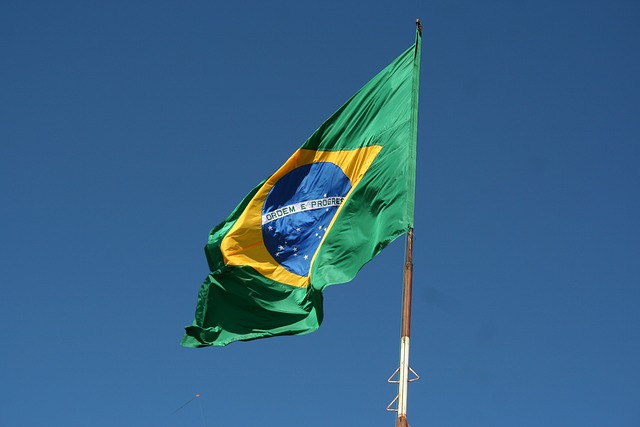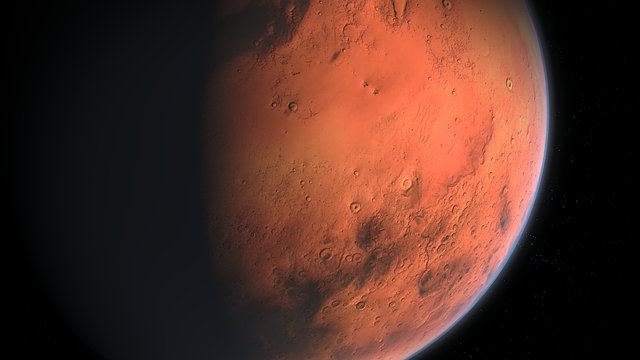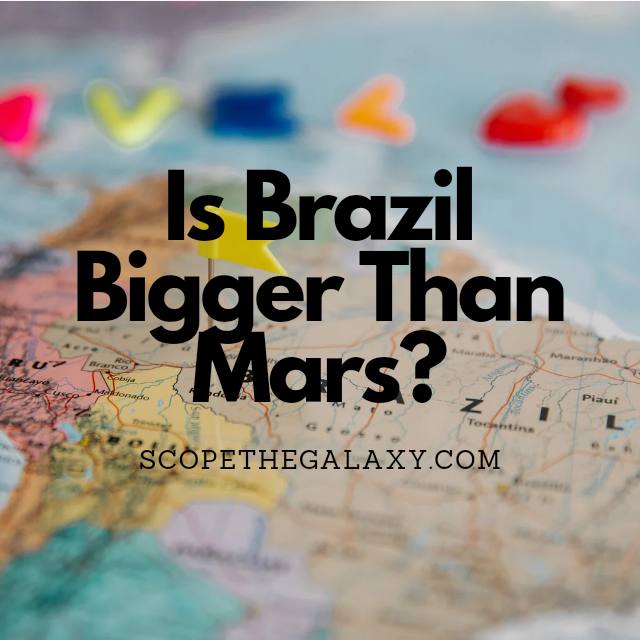*This post may contain affiliate links. This means we may make a commission if you purchase an item using one of our links*
Brazil is the fifth largest country on Earth, while Mars is the second smallest planet in our solar system. As a result it only makes sense that it’d be bigger with a surface area of 144.8 million sq. km compared to Brazil’s 8.5 million sq. km whereas Brazil’s volume is far smaller at 340 million cubic km compared to Mars’ astronomically larger 163 billion cubic km.
For a more detailed look at what makes each body as big as they are, continue reading as it will be covered in more depth throughout this article.
How Big Is Brazil?

Brazil, officially known as the Federative Republic of Brazil, is a country situated in South America. However, it makes up around half of the continent’s total landmass. It is the fifth largest country in the world, only beaten by the United States, Russia, Canada, and China.
Brazil stretches for roughly 4,350 kilometers from north to south and around 4,395 kilometers from east to west, giving its circumference a total landmass of around 8.5 million square kilometers. Within this landmass of Brazil, there are approximately 216 million people, which makes it the 6th most populated country in the world.
Brazil is so large that it covers 7,400 kilometers of the Atlantic coastline, sharing over 15,000 kilometers of inland borders with just about every South American country besides Ecuador and Chile. They border Uruguay to their South, Bolivia, Paraguay, and Argentina to their South West.
Peru lies to the West of Brazil, while Venezuela, Suriname, Guyana, and French Guiana lie to its immediate north. The total shape of Brazil forms an enormous irregular triangle that includes a huge amount of the Amazon rainforest, subtropical landscapes, savanna, wetlands, and mountainous regions.
If we are to assume that the average thickness of the land on Brazil is roughly 40km, this would lead to Brazil’s overall cubic volume reaching a relatively high number of 340 million cubic kilometers.
How Big Is Mars?

Mars is the fourth planet in line from the Sun and the second smallest planet in our solar system. It has a diameter of 6,779 km, which is only just over half as large as Earth’s (around 53%)
The physical geography of Mars is very different from that of Earth. The atmosphere on Mars is much thinner than ours, and it consists mainly of carbon dioxide (CO2) with small amounts of nitrogen (N2). The surface gravity on Mars is much lower than that on Earth, so an object that weighs 100 pounds on Earth, would weigh just 38 pounds on the red planet.
The surface of Mars is mainly composed of various minerals like iron oxide and silicon dioxide. It also has polar ice caps, but it doesn’t have any oceans or seas.
Olympus Mons is the largest volcano on Mars, with a diameter of 600km. And it is the largest mountain in our solar system, standing at roughly 27km high (almost three times the height of Mount Everest)
The Valles Marineris system of valleys is a vast network of canyons on Mars; the largest canyon in the solar system. It is located in the planet’s southern hemisphere and extends for around 4000 kilometers from east to west; the deepest points can extend up to 10km.
The basic makeup of Earth and Mars is similar as they are both terrestrial planets with a dense metallic core and overlying crust and mantle. However, Earth’s density (5.514g per cubic cm) is higher than Mars’ density (3.93g per cubic cm), suggesting that the red planet’s core contains lighter elements than Earth’s.
The surface area of Mars is around 144.8 million sq. km, about 17 times the surface area of the Brazil. Meanwhile, the volume of Mars is approximately 163 billion cubic kilometers, roughly 480 times that of Brazil.
Summary
Despite being the 5th largest country on planet Earth, there isn’t a single metric in which Brazil overthrows Mars in terms of size, whether it be surface area, diameter or volume.
Then again this makes perfect sense as Mars is a spherical body whereas Brazil is a mostly flat land mass.

